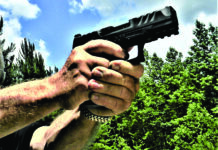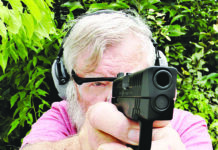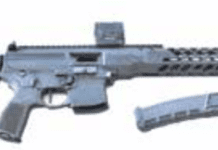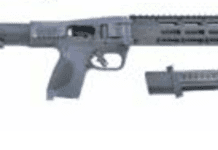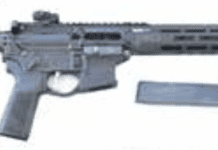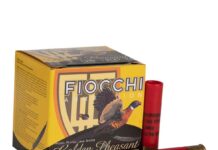(GunReports.com) — Trophy-class specimens of whitetail deer, Stone’s sheep, Dall’s sheep, desert sheep and grizzly bears are becoming more common afield, based on newly compiled records by the Boone and Crockett Club. However, trophy records are declining for caribou.
The Club compiled records for the period 2010-12 in preparation for its triennial tribute to big-game conservation and management–the 28th Big Game Awards, July 17-20, in Reno, Nev. The event, set for the Silver Legacy Hotel, features a public exhibition of the largest trophies from this three-year period, including a new World’s Record Rocky Mountain goat and records-book specimens taken by youths.
“We’re looking at the last three years’ worth of entries in 36 categories of native North American big game, and comparing the data to previous three-year recording periods,” said Richard Hale, chairman of the Club’s Records Committee. “And, we’re finding many reasons to celebrate the current state of conservation, as well as a few causes for concern.”
Boone and Crockett for 2010-12 received the second-most trophy entries of any triennium in its history, trailing only 2007-09.
Within the 2010-12 entries, the condition of most categories of big-game trophies is considered stable, with comparatively insignificant gains or losses compared to preceding periods. This list includes Alaska brown bear, Alaska-Yukon moose, bighorn sheep, bison, black bear, Canada moose, cougar, non-typical American elk, non-typical Columbia blacktail deer, non-typical Coue’s deer, non-typical Sitka blacktail deer, polar bear, Pacific walrus, Roosevelt’s elk, tule elk, typical American elk, typical Columbia blacktail deer, typical Coue’s deer, and typical Sitka blacktail deer.
Significant uptrends from 2007-09 to 2010-12 include:
Dall’s sheep, up 41.2 percent Desert sheep, up 58.8 percent Grizzly bear, up 19.1 percent Non-typical whitetail deer, up 12.2 percent Stone’s sheep, up 94.1 percent Typical whitetail deer, up 12.2 percent.
Noteworthy downtrends from 2007-09 to 2010-12 include:
Musk ox, down 47.7 percent Non-typical mule deer, down 12.2 percent Pronghorn, down 37.9 percent Rocky Mountain goat, down 16.2 percent Shiras moose, down 26.6 percent Typical mule deer, down 21.5 percent.
Hale said the Boone and Crockett Club is most concerned about caribou. Entries for central Canada barren ground caribou dropped 77.4 percent, while entries for Quebec-Labrador caribou fell 78.6 percent, between 2007-09 and 2010-12.
He explained, “The sharp declines in those two categories are the latest in a continuing trend. Overall, B&C entries for all five categories of North American caribou (which also includes barren ground, mountain and woodland caribou) have been dropping for years. From 1993-95 through 2010-12, we’ve charted an alarming decrease in caribou entries as a whole.”
Hunters led the restoration, conservation, and management practices that brought many big-game species from vanishing to flourishing, and Hale expects hunters will do the same for caribou once the causes and remedies for declines are known.
Boone and Crockett Club began keeping trophy records in 1906 as a way of detailing species once thought headed for extinction. Today, trophy data reflect population health and habitat quality. Biologists compare and contrast records to improve local management strategies as well as state and federal wildlife policies.
The Club began hosting public exhibitions in 1947 so that citizens could see the trophies that Boone and Crockett honors as symbols of America’s historic conservation system. That tradition will continue in Reno, July 17-20, with Boone and Crockett Club’s 28th Big Game Awards. The event is designed to celebrate past, present, and ongoing conservation successes–and draw attention to the conservation needs of the future.


